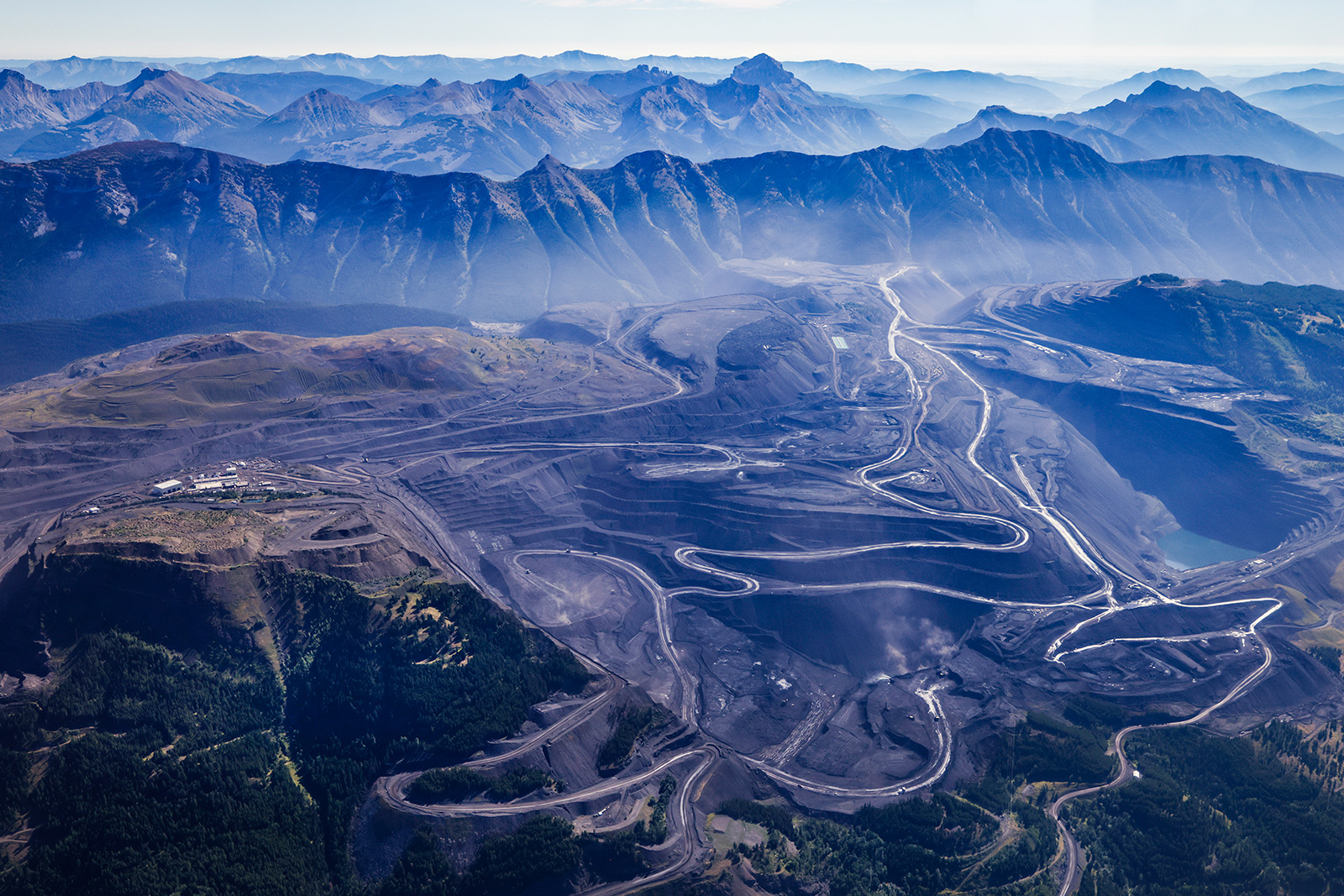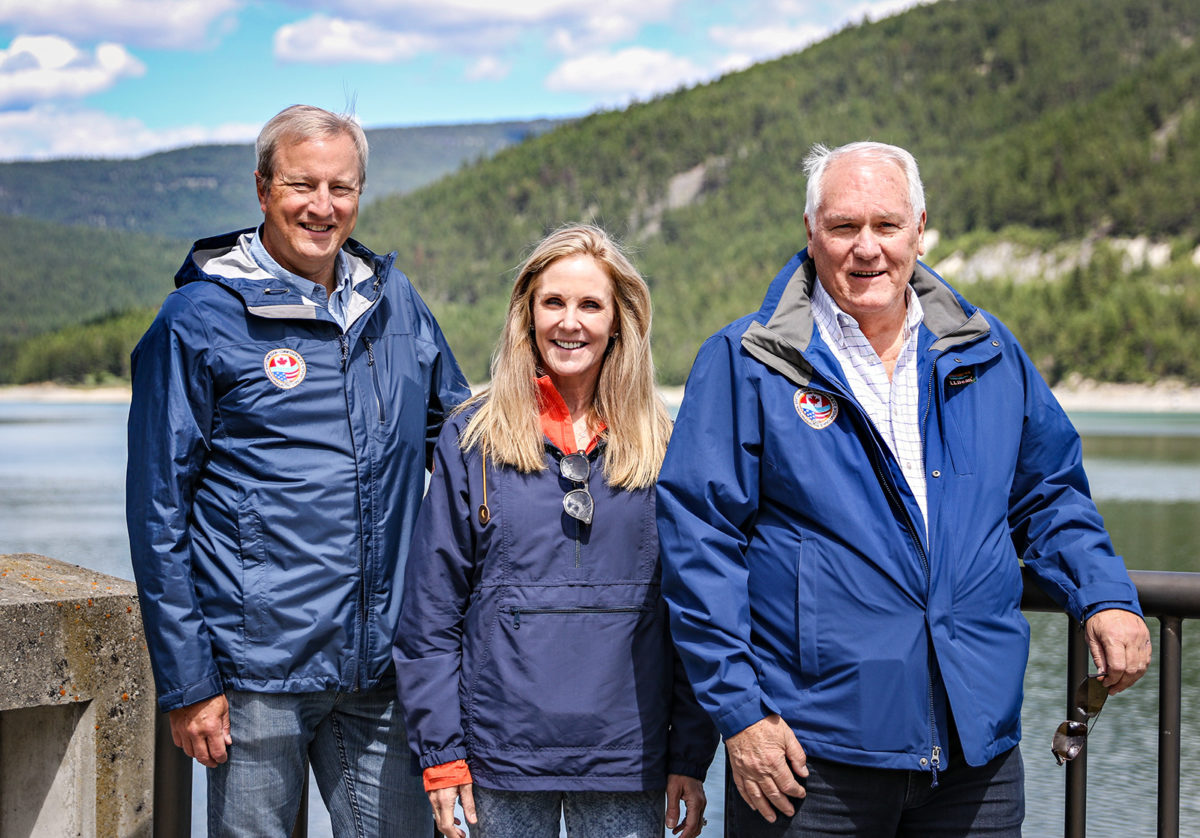IJC Appoints Board of Experts to Study Mining Pollution in Elk-Kootenai Watershed
Tom Bansak of the Flathead Lake Biological Station will co-chair the study board to investigate Canadian coal mining pollution on Montana’s international boundary
By Tristan Scott
The international commission tasked with investigating ecological threats to transboundary watersheds has convened an independent board of experts to study mining contaminants in the Elk-Kootenai River basin, where the flow of pollution from Canadian coal operations is degrading water quality in British Columbia (B.C.), Montana and Idaho.
The “study board” consists of equal numbers of experts from the U.S. and Canada, as well as experts representing Indigenous interests. Its formation signals a critical first step in the International Joint Commission’s (IJC) directive to “conduct transparent and coordinated transboundary data and knowledge sharing” on the Elk-Kootenai watershed, where the downstream consequences of Canadian coal mining operations have galvanized state, federal and tribal governments as they call for more regulatory transparency and a higher degree of scrutiny on coal mines that have operated in the Elk River Valley for more than a century.
Although the scope of the pollution generated by that legacy of coal mining has come into clearer focus in the past 15 years, the IJC’s intervention in March signaled a breakthrough in bilateral talks that have stalled for years, even as the company that owns the mines expands its footprint along the border with Montana.
Tribal and First Nation governments emerged as the most persistent advocates for an independent examination of the mining operations, mounting a united front to insist that any solution to pollution in the international watershed must include IJC intervention, and must include tribal involvement.
An IJC press release announcing the creation of the study board, which includes tribal members and elders, acknowledges the importance of that partnership: “This is a historic moment for Canada-United States transboundary relations as it represents the first time that Indigenous Peoples have played a key role in the development of a reference to the IJC under the Boundary Waters Treaty of 1909. Building on this, the IJC has ensured that Indigenous Peoples and Indigenous knowledge will be a crucial part of the Study Board and its work, including through membership on the Study Board.”
The IJC’s directive to the study board describes its principal function as “to conduct transparent and coordinated transboundary data and knowledge sharing, and share, synthesize and analyze data and information to support a common understanding of pollution within the watershed and its impacts on people and species.”
The IJC announced the formation of the International Elk-Kootenai Watershed Pollution Study Board on Sept. 26.

Over the next two years, the board will report and make recommendations on the matters set out by the IJC. The study board will be co-chaired by Tom Bansak, assistant director of the University of Montana’s Flathead Lake Biological Station, and Oliver Brandes, of the University of Victoria. The board will be supported by technical working groups, a public advisory group, and a group of “traditional cultural knowledge holders.”
The study board is expected to submit an interim report in the fall of 2025 and a final report September 2026. A typical IJC reference investigation spans five years, so the compressed two-year timeline of the Elk-Kootenai watershed will likely require a more rigorous time commitment by board members.
Reached by telephone, Bansak said he was still familiarizing himself with the scope and criteria of his role as co-chair.
The study board consists of the following members:
- Tom Bansak, University of Montana, United States Co-Chair
- Oliver Brandes, University of Victoria, Canadian Co-Chair
- Kelly Munkittrick, University of Calgary, Canadian member
- Stella Swanson, environmental consultant, Canadian member
- Elder Vi Birdstone, ʔaq̓am Elder, Ktunaxa Nation member
- Clayton Matt, Tribal Resource Management, retired director, Confederated Salish and Kootenai Tribes member
- Rich Di Giulio, Duke University, retired, United States member
- Jill Frankforter, U.S. Geological Survey, retired, United States member

The Elk River rises in the Canadian Rockies and flows into the U.S. at Lake Koocanusa, an impoundment of the Kootenai River (spelled “Kootenay” in Canada). It then flows through the states of Montana and Idaho, and through transboundary Ktunaxa lands, including those of the Confederated Salish and Kootenai Tribes (CSKT) and the Kootenai Tribe of Idaho (KTOI), on its way back to the province of B.C., where it empties into the Columbia River.
Although open-pit coal mines located in the Elk Valley of southeast B.C. have leached selenium, nitrate, and sulphate into the Elk and Kootenai rivers for decades, there are no coal mines on the Kootenai River, even as growing evidence reveals that high concentrations of mining contaminants far exceed water quality standards and are degrading the watershed’s aquatic health. Since 2012, Indigenous leaders from the Ktunaxa Nation, the CSKT and the KTOI have ramped up pressure on Canada and the U.S. to address the water quality crisis, even as the Canadian federal government remained hidebound in its resistance.
When the tribes finally succeeded in breaking the stalemate last March, the federal governments of the U.S. and Canada, in partnership with the Ktunaxa Nation, submitted a “reference” to the IJC, which has the authority to issue orders placing conditions on the application and operation of projects, such as dams and coal mines. In 1985, for example, a reference to the IJC centered on the transboundary water quality implications of a proposed coal mine on B.C.’s Cabin Creek, located north of Glacier National Park near the confluence with the North Fork Flathead River.
In that case, the fight against the Cabin Creek coal mine galvanized communities spanning the international boundary and forged a grassroots alliance that became the North Fork Preservation Association. The IJC ultimately recommended “that the coal mine should not be approved or receive regulatory approval in the future,” setting the stage for broader protections on the North Fork Flathead River in Montana.
In the case of the Elk-Kootenai river basin, the IJC reference coincides with new research showing that long-term trends of increasing selenium concentrations directly parallel increasing trends in metallurgical coal production. Selenium leaching from waste rock dumps in the Elk River have “increased at rates among the highest observed in the primary literature,” according to a U.S. Geological Survey study published this summer, which revealed a 551% increase in selenium concentration in the Elk River from 1984 to 2022.
The study was the first of its kind to document multiple lines of evidence of the long-range transport of selenium more than 350 miles from the Elk River mines to the Columbia River, which the study nots is “among the farthest documented distance” of selenium transport. Moreover, fish tissue samples exceeded the U.S. Environmental Protection Agency’s criteria for selenium concentrations in and downstream of Lake Koocanusa, which suggest the Kootenai River ecosystem “may accumulate more [selenium] than water column concentrations alone would suggest.”
“Thus,” the study states, “aquatic life downstream of [the Elk River mines] might be at risk to [selenium] toxicity even when concentrations are below Canadian and U.S. regulatory criteria. These results demonstrate the usefulness of monitoring [selenium] far downstream of mining areas to inform management.”